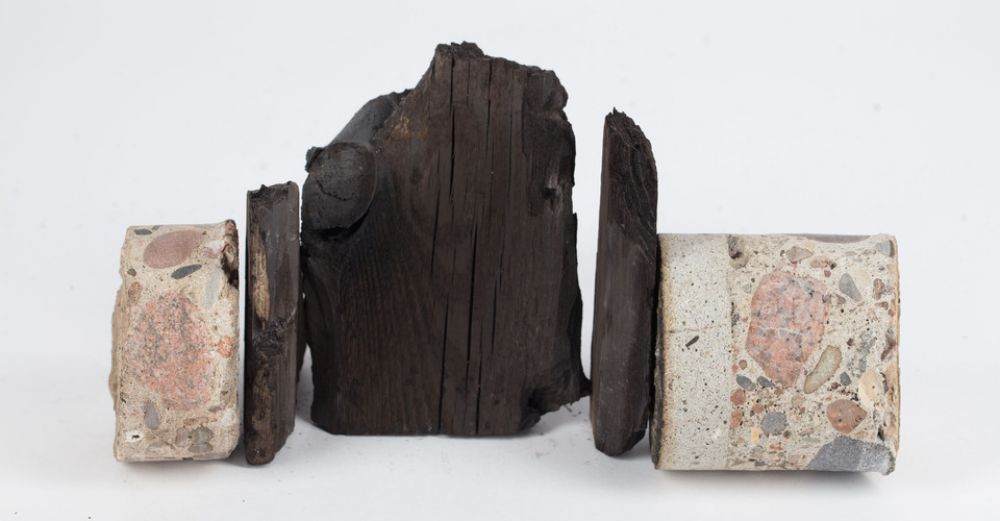- News
- Events
- Oneg Shabbat
- Collections
- Research
- Exhibitions
- Education
- Publishing Department
- Genealogy
- About the Institute
- Bookstore


Photo by
During a renovation, which has been taking place in 2017 due to preparations for the exhibition "What we were unable to shout out to the world", dedicated to the Oneg Shabbat group and the Underground Archive of the Warsaw Ghetto, we have made a very special discovery. We managed to reach wooden elements of the ceiling, which were charred in the fire in 1943.
Burnt wood in the ceiling of the Jewish Historical Institute, traces of fire on the floor in the hall of the Institute and conservation works
How was it possible that the wood wasn’t completely burned and managed to survive until present day? Construction engineer Radosław Gralak explains: – The ceiling in the entrance hall is, in its central arch, a reinforced concrete slab construction. I believe that the wood wasn’t entirely burned, because the reinforced concrete ceiling block provided a fairly successful barrier against the flames, while the charring was caused by a very high temperature.
The fire which began after the explosion in the Great Synagogue entered the building of the Main Judaic Library – currently the seat of the Jewish Historical Institute. It is proven by discolorations caused by high temperature, still visible today. In order to prevent further destruction of the floors and to strengthen it, we decided that it should undergo specialist conservation.
![wielka_synagoga_berlinka.jpg [318.53 KB]](https://www.jhi.pl/storage/image/core_files/2021/5/14/6ddc6657a32f4131ac2e8116e38c1373/jpg/jhi/preview/wielka_synagoga_berlinka.jpg)
Before the war, the current building of the Jewish Historical Institute was the home of the Main Judaic Library and the Warsaw Institute for Judaic Studies. Between November 1940 and March 1942, it was located within the borders of the Warsaw Ghetto. It hosted subsequently: the Jewish Self-Help headquarters, a temporary location for Jews forcibly resettled from Germany, and a storage room for furniture stolen by the Germans in the ghetto. Here also the secret meetings of the Oneg Shabbat (Hebrew for "The Joy of Sabbath”) took place. The group, directed by Emanuel Ringelblum, collected comprehensive documents of life and extermination of Jews in Poland during World War II.
On May 16 1943, to mark the quashing of resistance in the Warsaw Ghetto, SS-Brigadeführer und Generalmajor der Polizei Jürgen Stroop ordered to blow up the Great Synagogue. It was intended as a symbolic act of "the final solution of the Jewish question” in Warsaw. Despite the fire, the Main Judaic Library wasn’t fully destroyed. New authorities of Warsaw assigned it to the Central Jewish Committee in Poland. After a thorough renovation, the building became a home for the Central Jewish Historical Commission. In 1947, the Commission became the Jewish Historical Institute, which remains at Tłomackie 3/5 until present day. The most valuable part of the Institute’s collection is the Ringelblum Archive, found in the ruins of the Warsaw Ghetto in two parts, in 1946 and 1950.
![tlomackie_1.jpg [359.93 KB]](https://www.jhi.pl/storage/image/core_files/2021/5/14/e21749366d3c17eb9f6356ca04db6c66/jpg/jhi/preview/tlomackie_1.jpg)